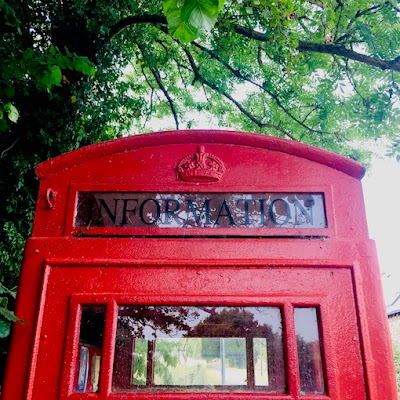Noticed in rural Herefordshire
In a casual way, I’ve pointed over the years to the various ways people have repurposed red telephone boxes as they have fallen out of use in this age of mobile communications. I like the way these small classics of design, the work of Sir Giles Gilbert Scott in 1935, have been put to new uses now there’s much less need for public telephones.* I’ve posted at various times miniature telephone-box art galleries in Yorkshire and next to Henry Moore’s house in Hertfordshire and a phone-box planter in Bath. I could as easily have mentioned such new purposes as housing defibrillators, miniature libraries, or even small businesses – perhaps I’ll get to those when I come across them again on my travels.
Here’s a use I’ve not seen before: a place to put the village noticeboard. It’s not strictly necessary for a noticeboard to be completely undercover in its own little building – most communities concerned about the weather (as who, in these times of climate change and storms, is not?) make do with a pair of lockable glass doors to protect the notices. But can you blame a village, wanting to preserve a K6 red telephone box and at the same time wanting somewhere to act as a noticeboard and miniature information hub, for putting these things together? And what is not to admire about getting someone to produce a sign, in a pleasant serif letterform, to replace the old ‘TELEPHONE’ legend beneath box’s shallow domed roof? I hope the King’s Caple information centre is used and appreciated.
- - - - -
* The K6 is the smaller successor of the K2, which Scott designed in 1924. Today about 11,000 K6 boxes survive (a small proportion of the original total). Of these, around 2,500 are listed, which means that it has become important to find uses for listed boxes in places where they are no longer required for telephone calling.




1 comment:
My Great Aunt, Alice Ravenhill, took great pride in cleaning this phone box until shortly before her death in the early 1960s.
Post a Comment